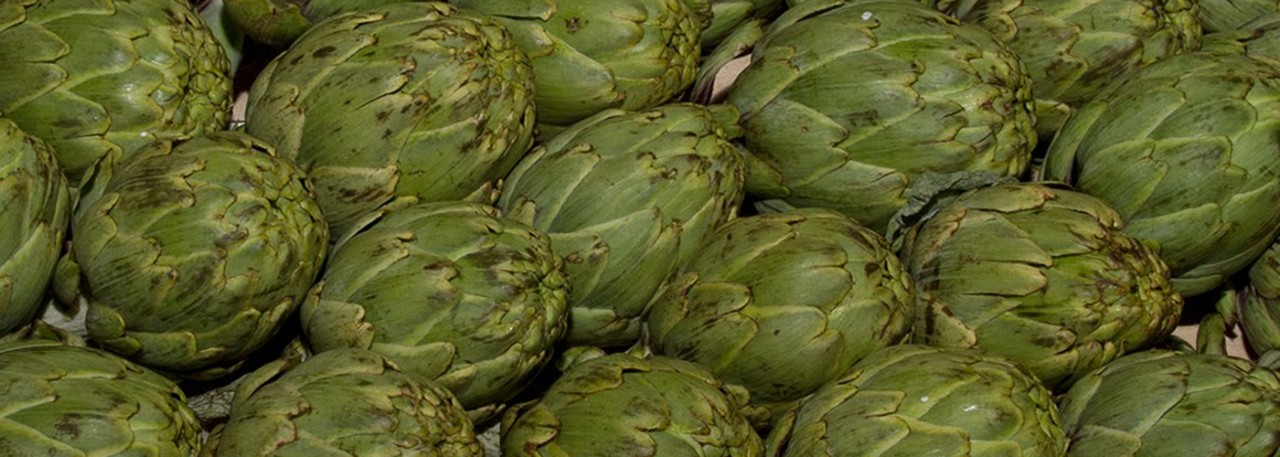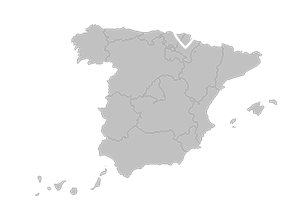.png.transform/rendition-xs/image_image%20(1).png)
Alcachofa de Tudela PGI
Artichoke hearts, Cynarus Scolymus L, belonging to the Blanca de Tudela variety, destined for fresh and canned consumption. This preserved food may be produced in any point in Navarre.
Tasting notes
It has a crisp texture, with a slightly bitter flavor, juicy and, when eaten raw, leaves a feeling of freshness in the mouth.
Other notes
It is different from other artichokes because of its more rounded form, and as it has a circular orifice in its upper part, due to the fact that the leaves do not manage to join together and close the flowerhead. The artichokes have the following nutritional values per 100g (3.52 oz) 82% water, 2.4% proteins, 0.12% fats, 9.5% carbohydrates.
Production / Processing method
The artichoke is subjected to annual cultivation, meaning that the plants are uprooted after remaining for one year on the land, from August of one year until July of the next. If they are to be canned, the product may come from biennial cultivation, whereby the plants are uprooted following the second year of plantation.
Cultivation of this vegetable must always take place on irrigated land. The harvest is manual, with successive stages to select the vegetables suitable for consumption. Artichokes are planted at the start of August, and their harvest is carried out in a staggered fashion. Production begins in mid-October, and lasts until the arrival of the first frosts, some time in December. The plant has a second budding, which is harvested between February and June. When the temperature rises above 25 ºC (77 ºF), hairs begin to appear on the artichokes.
The artichokes gathered in autumn, along with those from March to May, are used for fresh consumption. As of April, the industry begins to take increasing advantage of artichoke production. The ideal temperature for the vegetable is between 15 and 18 ºC (59 – 64.4 ºF), and harvesting is carried out manually, every six or seven days.
Geography / Relief and climate
The Ribera de Navarra has always been a traditional vegetable producing area which, thanks to its quality and special characteristics, has enjoyed high prestige. The artichoke is a prize crop throughout the entire area. Cultivation of this vegetable takes place on the alluvial plains, in particular the lower terraces of the Rivers Ebro, Ega and Aragón, with its tributary the Arga, which are home to the soil that is most suited to the artichoke’s development. The land here has a medium texture, is free from stones, rich in calcium, fresh and well-drained.
The area's climatic characteristics, with cold winters and mild summers, allow a much slower production rhythm than in other areas where production comes at an earlier stage. This leads to a product with a more precise quality, favored by the production system.
Regulatory Council
The Institute for Agrifood Technology and Infrastructures of Navarre (INTIA)
Avd. Serapio Huici, 22 - Edificio Peritos
31610 Villava (Navarra)
Tel: (+34) 948 013 045
alcachofatudela@intiasa.es
www.denominacionesnavarra.com
Sources:
- Spanish Ministry of Agriculture
- The Institute for Agrifood Technology and Infrastructures of Navarre (INTIA)
It has a circular orifice in its upper part and more rounded form from other artichokes.


- Image1
- Image2

Villava (Navarre)
